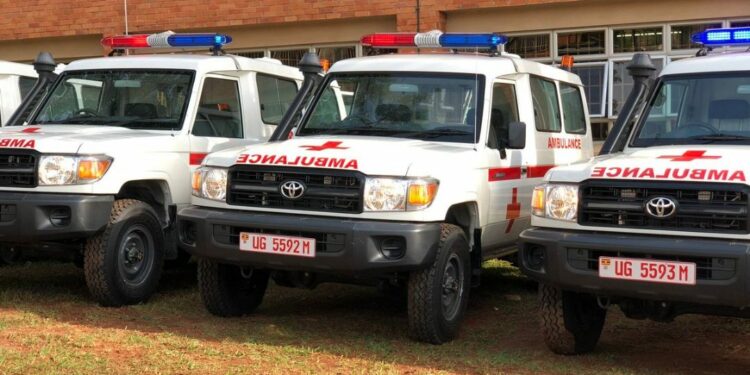Following a social media blitz under hashtag UgandaHealthExhibition, this website is equally exhibiting factual exhibitions of the improvements in the country’s health sector. Whereas it is true it is not yet uhuru for the ideal health sector, this column will highlight the transformations under 12 key pillars in Uganda’s health sector.
The establishment of a functional National Ambulance Service is one of the top priorities of Uganda’s Ministry of Health (MoH). It is embedded in the National Emergency Medical Services (EMS) Policy and Strategy, National Development plan III and President Museveni’s Manifesto 2021-2025.
The National EMS system includes the following three levels of care:
- Response at the scene of emergency; which includes transportation with care; response at the health facility level and critical care.
The approval of the EMS policy by the Cabinet and subsequent launch of EMS Policy and The Strategic Plan has paved way for systematic development of EMS in the Country.
Marine boat ambulances
The Ministry of Health with support from GAVI procured 12cBoat ambulances. The Ministry of Health has now completed the coverage of the 20% of the Uganda population that lives around water areas such as Buvuma, Kalangala, Islands, among others.
The MOH approved the Standards and Norms of ambulances in 2021 which recommend Type B ambulance (Basic Life Support) for universal coverage and Type C ambulance (Advanced life support/Specialised ambulance) used for critically ill patients. Each constituency in Uganda (100,000 population) will be allocated one Type B ambulance and each health region (2,000,000 population) will be allocated one Type C ambulance.

In addition, the MOH has taken the response to the highway road traffic crashes as one of the key outputs of the Emergency care response team. Annually we lose over 3,500 people due to road traffic crashes. The MOH has partnered with Uganda Red Cross Society (URCS) to establish a responsive EMS system along the highways and to date have placed twenty one type B ambulances across the highways in Uganda.
The MOH will establish one National and 16 ambulance stations / Call and Dispatch Centres in which ambulance vehicles are serviced and refilled with equipment and medicines/health supplies. Currently two regional centres have been set up at Naguru National Referral Hospital and Masaka Regional Referral Hospital.
Next, we shall exhibit the transformations in Uganda’s Health Infrastructure Developments.
Share Uganda’s positive Health experiences with us; via editorial@watchdoguganda.com
Do you have a story in your community or an opinion to share with us: Email us at editorial@watchdoguganda.com













